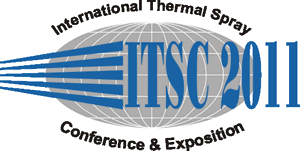
|
| Abstract No.: |
|
Scheduled at:
|
Thursday, September 29, 2011, Saal B2.2 3:15 PM
Characterization & Testing 4
|
|
| Title: |
Comparison of isolated indentation and grid indentation methods for HVOF sprayed cermets
|
|
| Authors: |
Jiri Nohava* / CSM Instruments SA, Switzerland
Sarka Houdkova / University of West Bohemia, Research Centre New Technologies, Czech Republic
Petr Hausild/ Czech Technical University in Prague, Faculty of Nuclear Sciences and Physical Engineering, Department of Materials, Czech Republic
Radek Enzl/ Flame Spray Technolgies, The Netherlands
|
|
| Abstract: |
Though hardness measurement has widely been applied for characterization of HVOF coatings, with the development and application of instrumented indentation new questions about the so-obtained results arised. Namely the use of advanced methods such as grid indentation can lead to significant errors when the results are not properly evaluated. This paper compares two approaches for indentation testing of HVOF sprayed coatings, the isolated indentation and the so-called grid indentation. Three types of industrially used HVOF sprayed coatings (Cr3C2-NiCr, WC-Co, (Ti, Mo)(C,N)-NiCo) were tested and two indentation methods were applied: isolated indentation in metallic and ceramic phase with 2 mN peak load and grid indentation with 2 mN peak loads, comprising 400 indentations. Despite some difficulties in locating the phases, the results of the isolated indentation revealed hardness and elastic modulus of the individual phases with surprisingly low standard deviation. These values were in very good agreement with the bulk material values. From the same indentations, important information about the elastic-plastic behavior of the single phases was revealed from the work of indentation. The grid indentation method, based on statistical evaluation of a large number of indentations, however, did not yield consistent results. A large number of indentations was influenced by the ceramics-metal interface, which gave rise to a strong third peak with intermediate hardness in the hardness histogram apart from the two peaks corresponding to the hard ceramics and softer metallic matrix. This third peak makes the statistical analysis much more complex than using simple bimodal Gaussian fit for separation of metallic and ceramic phase properties. Even at relatively low loads, the isolated indentation method is therefore more suitable for testing of the HVOF coatings than otherwise successfully applied grid indentation method. Ongoing work is now focused on establishing a reliable indentation method also for other types of coatings.
|
|
